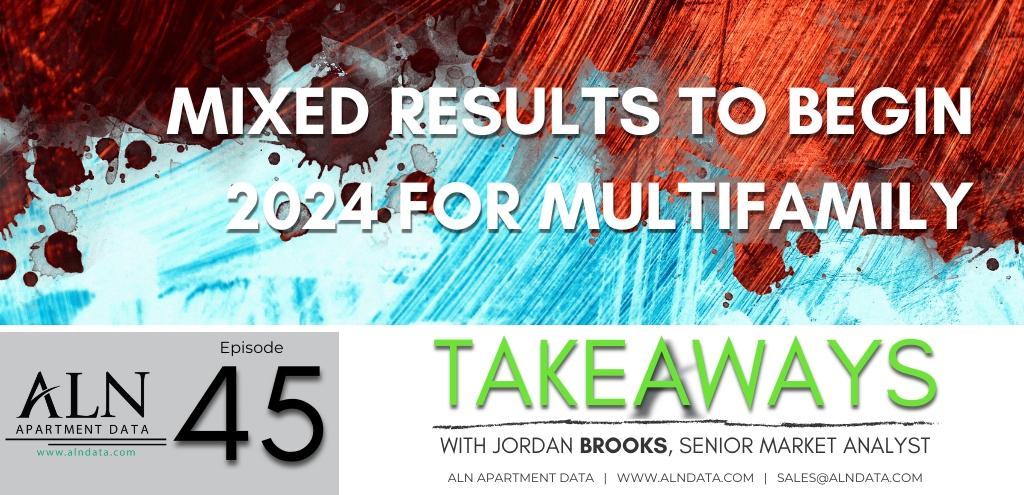Market Spotlight: Dallas-Fort Worth
As one of the largest multifamily markets in the country, and as a growth market in a growth state, Dallas-Fort Worth is typically one of the most active in the United States for new supply and has a notable impact on national performance metrics like net absorption. It is an area that tends to be a bit more insulated in periods of softening performance for the industry thanks to a well-diversified employment base by sector, consistent population growth, a low cost of living relative to other metros around its size, and myriad other factors. DFW is next up for the latest installment in the Market Spotlight series.
As always, numbers will refer to conventional properties of at least 50 units unless otherwise specified.
New Supply and Net Absorption
Just more than 25,000 new units have been delivered across DFW in the last twelve months, a period from March 2022 through February 2023. This level of new supply was right at the three-year average calculated from the previous 36 months and accounted for approximately 3% of current multifamily stock.
From a submarket perspective, North Fort Worth and Frisco – The Colony – Little Elm led the way with around 2,300 new units delivered in the period. Other areas with notable new supply included about 1,700 new units in the Southwest Dallas – Oak Cliff area, about 1,400 new units in McKinney – Allen – Fairview, and approximately 1,200 new units in the Denton – Corinth region. Almost two-thirds of the 43 ALN submarkets for Dallas – Fort Worth have had some level of new supply in the last 12 months.
New supply has been fairly typical during the last year, but apartment demand has been anything but. Prior to the explosion in net absorption that occurred in 2021, an average net absorption total for this 12-month period from March through February was about 21,000 units. From March 2021 through February 2022 the total was 48,000 net absorbed units. Through the last twelve months, DFW subsequently suffered a net loss of around 2,000 leased units.
The losses were most pronounced in the Class C and Class D price classes – with the net loss in leased units totaling about 2,500 units and 5,000 units respectively in the period. The roughly 4,500 net units absorbed in the Class A space was the closest to the recent average, but even there, apartment demand was significantly lower than in any recent period.
Average Effective Rent and Lease Concessions
As with net absorption, average effective rent growth for new leases has also not been within the usual range over the last 12 months. On the one hand, the growth has been less than half that from the previous annual period, but on the other, the nearly 7% gain over the last year was still well above the average of 3% prior to 2021 for this portion of the calendar. All of that almost 7% increase was captured in the first six months of the period, March through August of 2022. In the six months since, average effective rent has declined by 0.2%.
Of the top dozen submarkets in average effective rent growth for DFW, only the Denton – Corinth region had more than one new property delivered in the last 12 months. The average rent gain there of just over 12% in the period was fourth highest out of 43 ALN submarkets for DFW. Other areas such as Bachman Lake – Webb Chapel, Southeast Dallas, South Irving, White Rock East – Buckner, and Central Arlington have seen rent growth of 10% or more in the last year with no new deliveries in that span. Additionally, those five latter submarkets each have seen average occupancy decline in that time along with negative net absorption across the board.
Lease concession availability has increased significantly in the last 12 months, and the increase has intensified in more recent months as cooling demand led to deflating occupancy rates. One year ago, discount availability for new leases stood at 9% – meaning that 9% of conventional properties were offering a discount. By the end of February, 17% of conventional properties were offering lease concessions for new residents. Availability still lags the pre-pandemic period when about one-quarter of properties offered a concession package, but that remaining delta appears likely to continue winnowing in the coming months.
Takeaways Episode 45
Takeaways
As with many markets around the country, Dallas – Fort Worth multifamily has struggled in some respects over the last year – particularly relative to the heady performance of 2021 and early 2022. The annual numbers can also obscure the situation a little bit. Looking at the more granular quarterly and monthly data reflects a softening of market conditions that has intensified over the last six months.
Average occupancy is DFW in now almost exactly what it was to end February of 2020 just before the pandemic began to affect the industry in earnest. Rent growth, while still well above the norm on an annual basis, has been in hibernation for six months and counting.
These negative developments in recent months are partially due to seasonal trends – the first and fourth quarters tend to be the more challenging portion of the calendar for multifamily – but also reflect a real change in environment. With the prospect of even more rate hikes on the way from the Federal Reserve thanks to recent employment and inflation data, hopes for more dovish Fed policy and something approximating a “soft landing” for the economy appear to be increasingly unlikely.
The question in the near term for DFW multifamily is, to what degree will the usual spring and summer apartment demand bounce materialize? With plenty of new supply on the way, the answer to this question in the coming months will go a long way to updating expectations for 2023 performance.
Disclaimer: All content and information within this article is for informational purposes only. ALN Apartment Data makes no representation as to the accuracy or completeness of any information in this or any other article posted on this site or found by following any link on this site. The owner will not be held liable for any losses, injuries, or damages from the display or use of this information. All content and information in this article may be shared provided a link to the article or website is included in the shared content.


